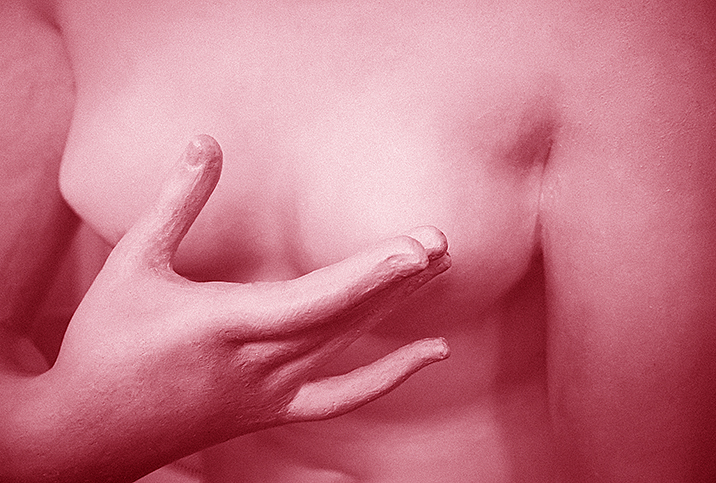How Breasts Change and What You Can Do About It

Wearing a bra 24/7 in hopes of avoiding sagging breasts when you're 60? You might want to rethink that. Like the rest of the body, a woman's breasts age. But while some issues are unavoidable, there are ways to reduce and manage others, helping you stay confident and happy with the girls for life.
Changes in appearance
With age, a number of factors cause a woman's breasts to change size and shape.
The breast is shaped and supported by Cooper's ligaments, which contain collagen and elastin. With time, these components break down and the ligaments stretch. A lifetime of weight fluctuations, including during pregnancy, additionally contribute to sagging and cause stretch marks, loss of volume and firmness, downturned nipples, and even asymmetry.
As women age, they produce less collagen, and their skin becomes thinner and more fragile. This, too, results in a change in breast skin, including decreased firmness. The areola, the area around the nipple, often shrinks and may disappear entirely.
Biochemical and hormonal changes contribute to noticeable differences, too. Decreasing estrogen levels result in breast skin that is dehydrated and less elastic. Breasts become fattier and less glandular as women age, resulting in their feeling less firm and losing shape and volume. Some women's breasts shrink, even by multiple cup sizes.
Breast health in older women
Breast cancer risk increases with age, with most cases diagnosed after age 50. Get mammograms as recommended by your doctor, and perform a manual breast self-exam monthly. If you find any suspicious changes—lumps, dimpling, discharge—consult a doctor immediately.
As an aside, there has been recent reassessment about the validity of self-exams. Some prominent health organizations state that breast self-exams aren't very effective as a diagnostic tool and discourage their practice. But many medical authorities still support a woman's own examination of her breasts as an important screening tool, with the caveat that they should be done in conjunction with physical examinations carried out by a doctor on a regular basis and mammograms.
The bottom line is we all age. The physical changes—wrinkles, thinning and sagging skin, age spots, changes in weight—happen to everyone.
Some slightly good news is that as you grow older, not all changes to your breasts are bad. With the cessation of menstruation, women typically stop experiencing the associated breast pain or tenderness. However, if you decide to use hormone replacement therapy (HRT) to combat menopause symptoms, it may cause the symptoms to reoccur.
The impact of breast changes
Breasts are a key part of many women's feminine identity, and seeing them change may cause some internal emotional struggles. Older women may feel less feminine and attractive and/or experience a decrease in self-confidence.
Feeling uncomfortable with your body undoubtedly affects your sex life, as does a general decrease in self-confidence and self-worth. It's difficult to be yourself and enjoy sex with a partner if you're feeling self-conscious. This may even prevent women from pursuing new relationships or cause them to avoid sex completely.
Preventing changes
The theories on how to keep your breasts from changing are endless, and as the "wear a bra to bed/never wear a bra to bed" debate points out, many of them contradict each other.
The reality is there's not a lot you can do to prevent the natural effects of gravity. In fact, wearing a supportive bra all the time may weaken your ligaments. However, when exercising, always wear a supportive undergarment; excessive movement and jumping can cause tension and break down breast ligaments.
HRT for menopause symptoms can prevent skin from becoming less elastic, although it won't reverse changes.
One of the best ways to prevent sagging is to maintain a consistent, healthy weight and eat a nutritious, balanced diet that includes antioxidants. Another important tip is to avoid smoking and tanning, both of which damage skin integrity.
Reversing changes
Cosmetic surgeons can perform breast lifts, alone or in combination with a breast reduction or augmentation. The procedure removes excess skin to lift and tighten breasts.
Less invasive ways to achieve a more lifted look include staying hydrated and wearing a more supportive bra (ask a professional at a lingerie store to help you).
Exercises that strengthen your chest muscles cannot correct breast drooping, but they can strengthen surrounding ligaments and muscles underneath the breasts. This may help them appear more lifted.
The bottom line is we all age. The physical changes—wrinkles, thinning and sagging skin, age spots, changes in weight distribution—happen to everyone. They prove you've been blessed with many years of life and remind you how lucky you are to have lived long.

















